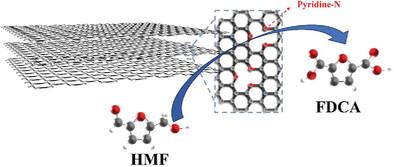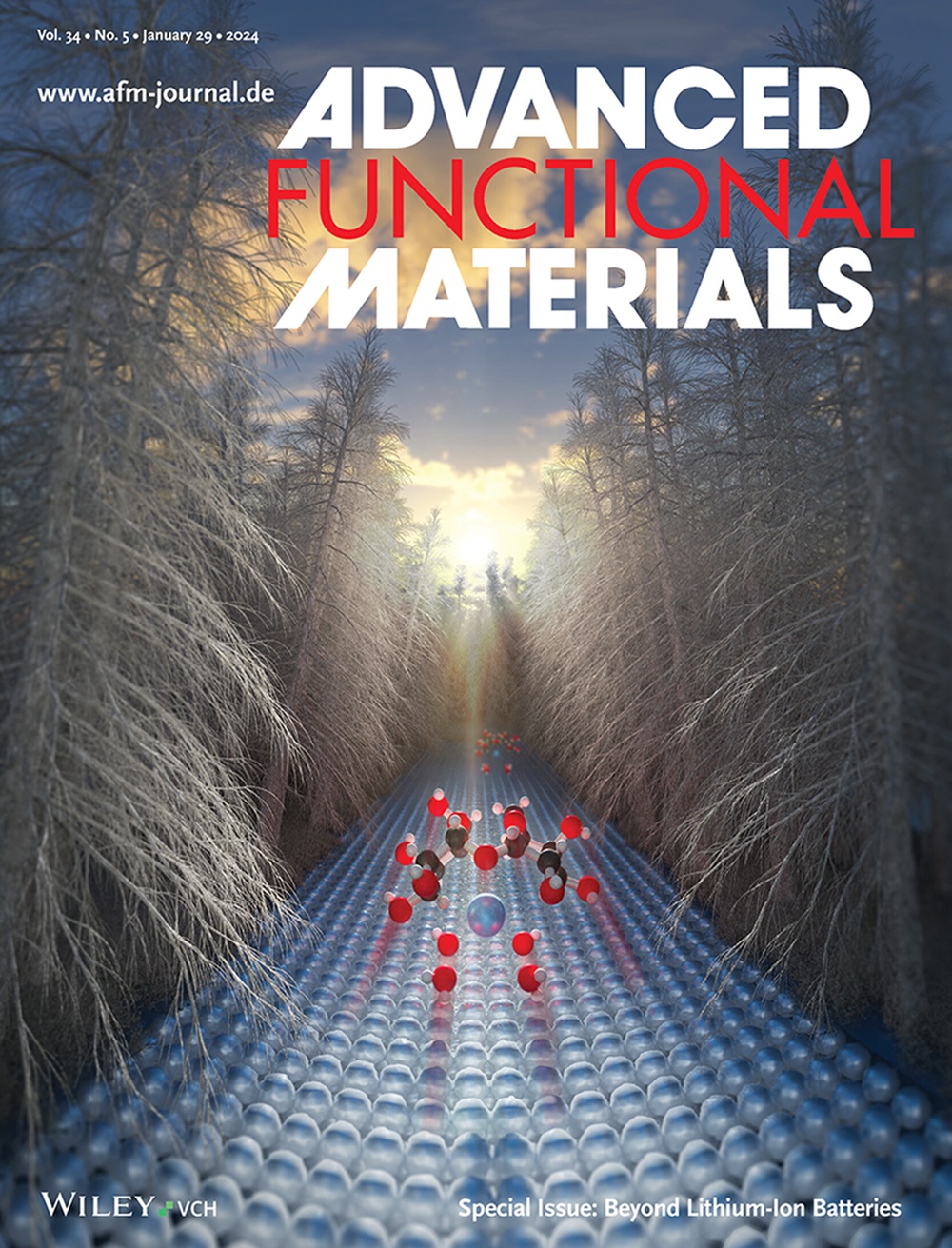用于高效、稳健电化学生物质增值的无金属碳质材料
IF 18.5
1区 材料科学
Q1 CHEMISTRY, MULTIDISCIPLINARY
引用次数: 0
摘要
2,5-呋喃二甲酸(FDCA)的合成对于生物聚合物的生产以及新兴的可持续生物基替代品的环境和能源应用都具有重要意义。本文介绍了一种无金属碳质材料,即生物质基质 5-hydroxymethylfurfural 衍生的石墨烯类氮掺杂多孔碳片(GNPCH),并将其用作电化学合成 FDCA 的新型催化剂。该研究仔细研究了其催化原理,证明了其令人惊讶的稳健性,并探索了 GNPCH 催化电合成 FDCA 的高效率来源。最初,5-羟甲基糠醛和尿素的面热解形成了具有丰富微孔和缺陷的超薄 GNPCH。通过使用 GNPCH-900 催化剂,FDCA 产量和法拉第效率均达到了 90% 的稳定、连续运行时间(400 小时);这些数值不仅代表了最好的无金属催化剂,可与最先进的金属基催化剂相媲美,而且还展示了运行时间最长的电化学 FDCA 合成反应之一。一系列电化学测量、原位表征和密度泛函理论计算表明,高效率的根源主要来自与吡啶-N 相关的活性位点,并阐明了反应途径。这些研究结果表明,GNPCH 催化剂将成为电化学生物质资源化过程中金属催化剂的潜在替代品。本文章由计算机程序翻译,如有差异,请以英文原文为准。

A Metal-Free Carbonaceous Material for Highly Efficient and Robust Electrochemical Biomass Valorization
2,5-Furandicarboxylic acid (FDCA) synthesis holds significant importance for both bio-polymer production and emerging sustainable bio-based alternatives for environmental and energy applications. Here, a metal-free carbonaceous material—that is, biomass substrate 5-hydroxymethylfurfural-derived graphene-like nitrogen doped porous carbon sheet (GNPCH)—and its application as a new catalyst for electrochemical FDCA synthesis is presented. The study scrutinized the catalytic principles, demonstrated the surprising robustness, and explored the origin of the high efficiency of GNPCH catalyzed electro-synthesis of FDCA. Initially, facial pyrolysis of 5-hydroxymethylfurfural and urea forms ultrathin GNPCH with rich micropores and defects. By employing GNPCH-900 catalyst, stable, continuous operation of >400 h with both FDCA yields and Faraday efficiencies >90% is achieved; those values not only represent the best metal-free catalyst and that are comparable to those of the state-of-the-art metal-based counterparts, but also showcase one of the longest-running electrochemical FDCA synthesis reactions. A series of electrochemical measurements, in situ characterization, and density functional theory calculations indicate that the origin of the high efficiency is mainly from the pyridinic-N-related active sites and clarify the reaction pathway. These findings suggest that the GNPCH catalyst will be a potential alternative to the metal-based catalysts in electrochemical biomass valorization.
求助全文
通过发布文献求助,成功后即可免费获取论文全文。
去求助
来源期刊

Advanced Functional Materials
工程技术-材料科学:综合
CiteScore
29.50
自引率
4.20%
发文量
2086
审稿时长
2.1 months
期刊介绍:
Firmly established as a top-tier materials science journal, Advanced Functional Materials reports breakthrough research in all aspects of materials science, including nanotechnology, chemistry, physics, and biology every week.
Advanced Functional Materials is known for its rapid and fair peer review, quality content, and high impact, making it the first choice of the international materials science community.
 求助内容:
求助内容: 应助结果提醒方式:
应助结果提醒方式:


